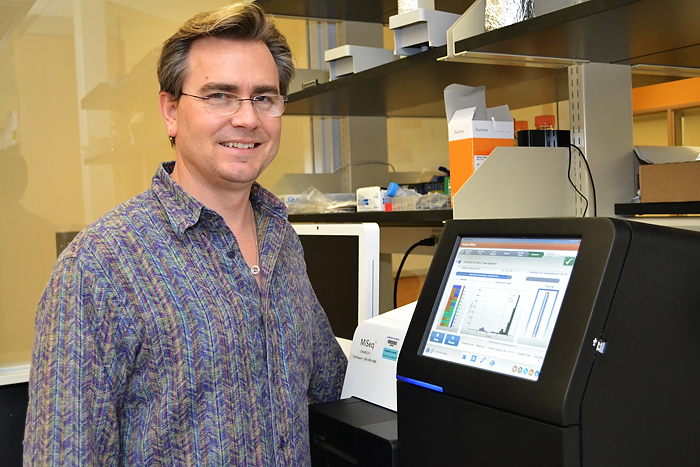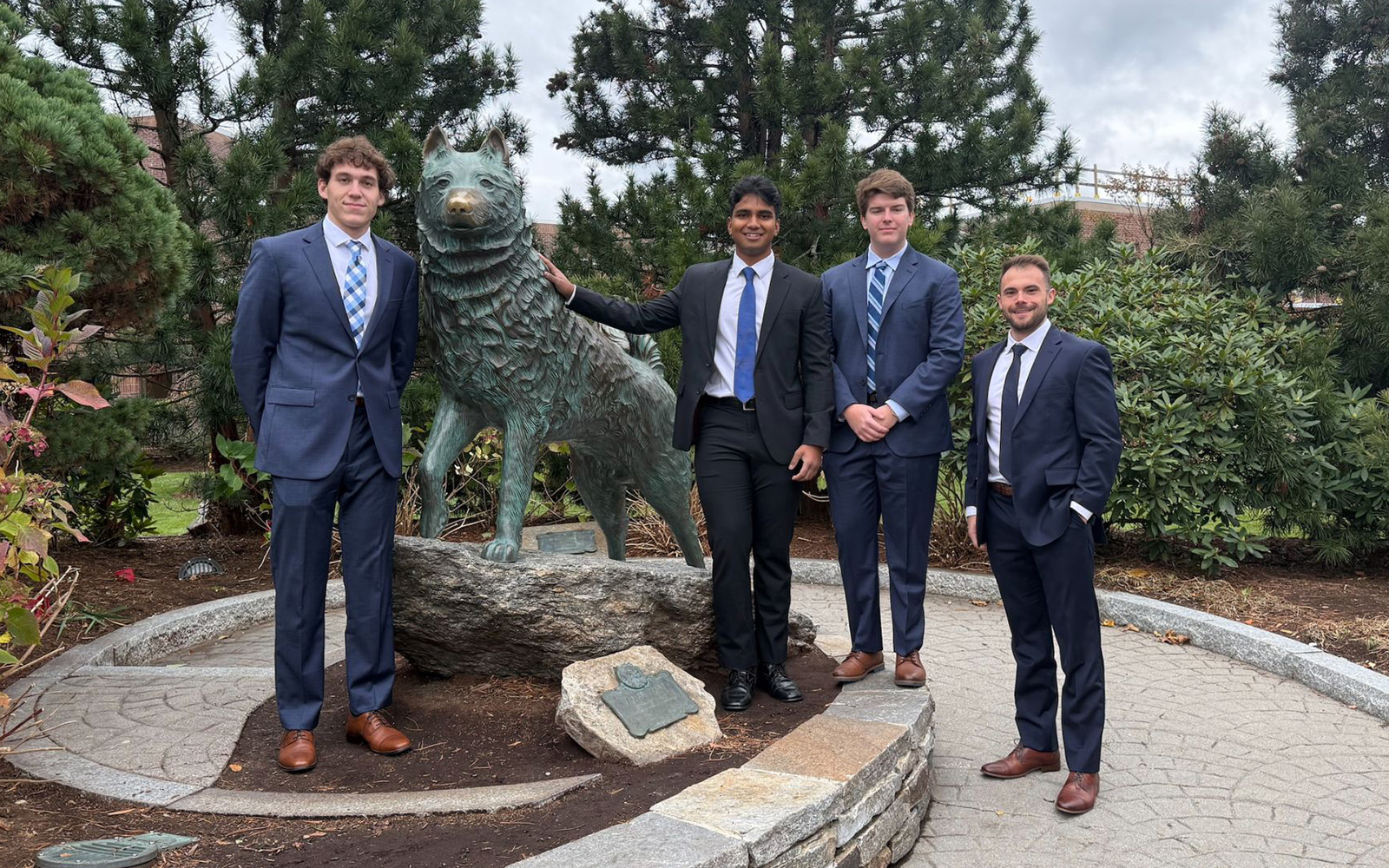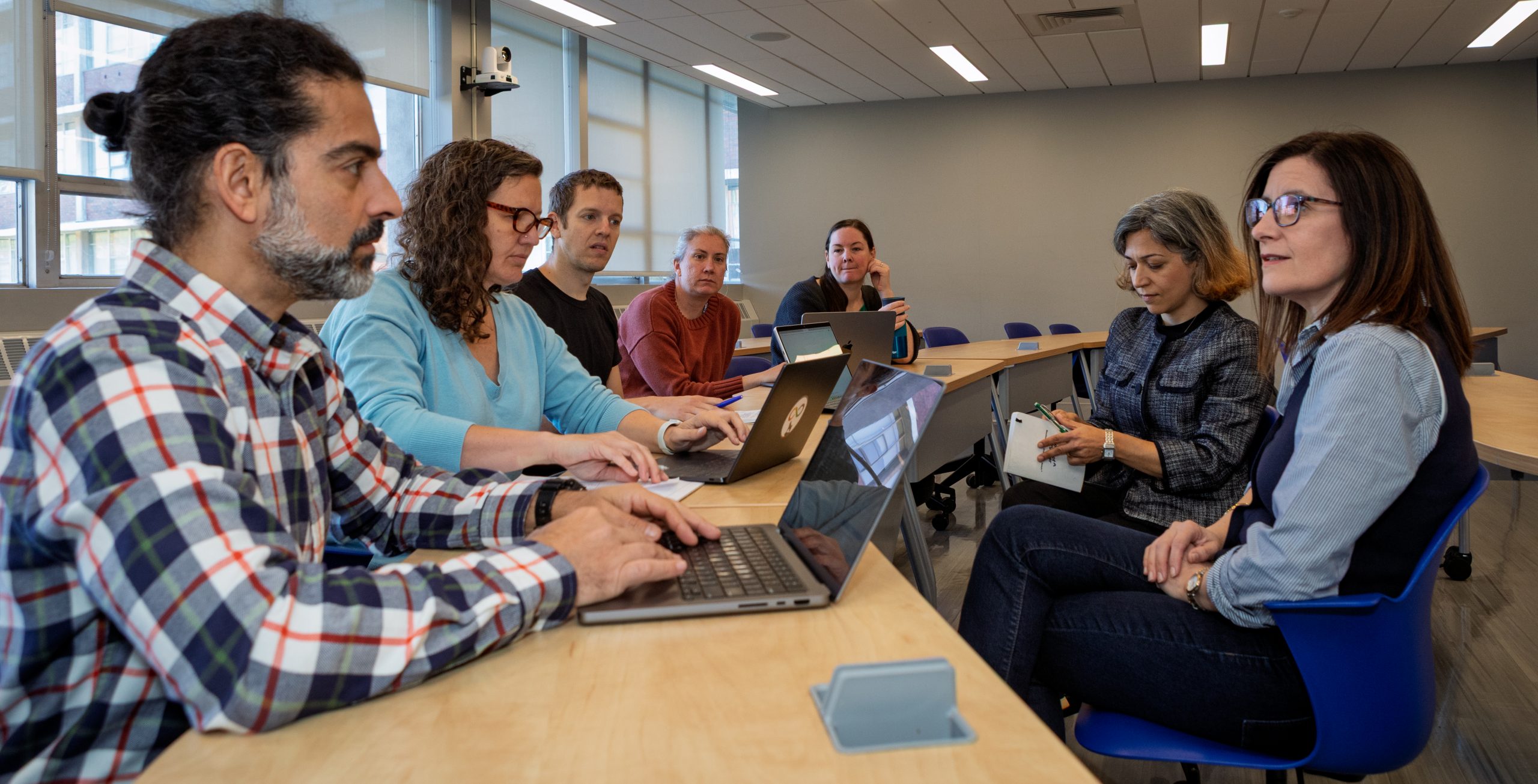
A remarkable revolution is occurring, and Brenton Graveley is on the front line.
A professor of genetics and associate director of the Institute for Systems Genomics at UConn, Graveley is researching the role that RNA plays in biology and disease. By studying the genome of Drosophila – the common fruit fly – he and his team have discovered thousands of new genes and tens of thousands of new ways in which communication occurs among them.
“One of the things that excites me about genomics is that it’s going through a revolutionary time,” says Graveley, whose latest research findings were published this month in Nature. “New technologies have changed the landscape of what we can do. We used to be able to look at only one gene at a time, but now can look at the entire genome.”
And that picture, he says, is amazing. Many human diseases are caused by mutations in RNA binding proteins or what they bind to. Learning more about RNA and how this process works can be a crucial step toward curing and preventing disease. “What we learn in fruit flies can be applied to humans,” he says.

Life’s building blocks
A genome is an organism’s complete DNA and includes all of its genes. In humans, each cell that has a nucleus contains a copy of the entire genome, which consists of more than three billion DNA base pairs. Every genome contains all of the information needed for that organism to live and grow.
RNA is a nucleic acid present in all living cells – from fruit flies to fish, from grass to trees, from humans to viruses. One of its main roles is to convert the information stored in DNA into proteins, and this is done in myriad ways. That’s where Graveley and his team come in.
“The human genome project identified the three billion letter string that basically spells human,” Graveley explains. “But we didn’t understand the ‘grammar’ of the genome, so we couldn’t read it well. Our studies are identifying genes and the products of genomes. Once we have that information, we can use it to interpret what the genome is doing.”
A worldwide reputation
Graveley “has a worldwide reputation in genomics,” says Marc Lalande, professor and chairman of Genetics and Developmental Biology at UConn Health. “He has built on one success after another.”
Lalande recruited Graveley from a post-doctoral position at Harvard. Within a year, Graveley had secured his first National Institutes of Health (NIH) grant. He is now a principal investigator of ENCODE (ENCyclopedia Of DNA Elements), a comprehensive catalog of function elements that control the expression of genetic information in a cell, in collaboration with scientists from other premier institutions nationwide.

Having a researcher of Graveley’s ability is perfect synergy with UConn’s partnership with Jackson Laboratory, Maine-based experts in genomics medicine. Jackson Laboratory is building a $1.1 billion research facility on UConn Health’s Farmington campus to advance discoveries in human genomics and develop the computational tools for interpreting research data.
Lalande describes Graveley as “a star… he’s the best known genomics researcher at the university. He facilitates our work with Jackson Labs and also serves as a mentor. Our junior faculty can work with him and learn from him and hopefully become as successful as he is.”
Fascination with RNA
Graveley’s interest in genomics grew while preparing his Ph.D. thesis on RNA dynamics that occur in the life cycle of the HIV virus. “I’ve always been fascinated with RNA,” Graveley says. “Genomics is the optimal technique for studying RNA biology, and I dove headfirst into it. I’ve also been interested in computer science since I was a small kid. So this is a perfect blend of biology, where we generate data, and computer science, where we analyze it. It’s the ultimate geek fest.”
Major advances in genomics research have come as the speed of sequencing DNA has gone up and the price of sequencing has gone down. Once the size of a refrigerator, computer sequencers today are as small as a thumb drive, and they are generating a flood of data as new discoveries are made.
“Our partnership with Jackson Labs and UConn-affiliated hospitals is designed to move this field forward and put Connecticut on the map,” Lalande says. “When people think of Connecticut, we want them to think of genomic medicine.”
For Graveley, a career in RNA research has been fascinating and rewarding. “The future is almost limitless,” he says. “It’s common in science to go with the flow and let things take you along, but you also have to take advantage of opportunities and steer the ship in the right direction. It’s a very exciting time to be a scientist.”
Follow UConn Health on Facebook, Twitter and YouTube.



